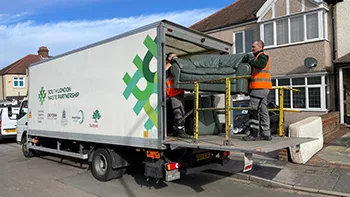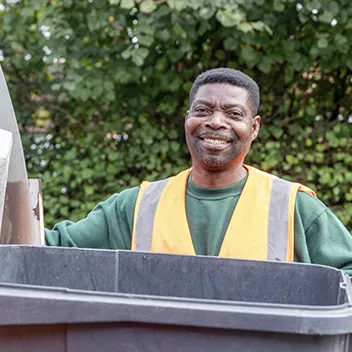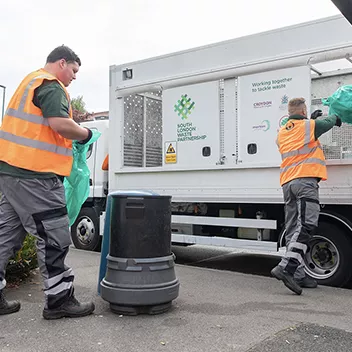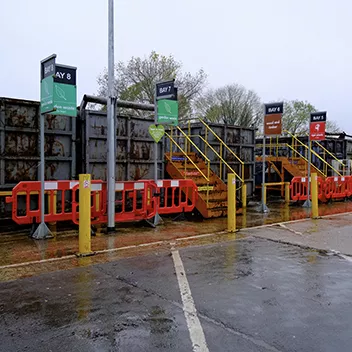
Bulky waste collections
Let us do the hard work for you! Our bulky waste collection service is a convenient and cost-effective way for you to responsibly dispose of larger household items.
Our garden waste collection service is a reliable, convenient and cost-effective way of recycling your garden waste.
This is a subscription-based service. The service has grown in recent years, and we are now pleased to have over 69,000 active subscriptions across the four SLWP boroughs. In a recent survey, 84% of subscribers said they were satisfied with the service and 93% said they intend to renew their subscriptions*.
93% of subscribers say they plan to renew their subscription when it expires *
Subscribers to the Garden Waste Collection Service benefit from:

You can subscribe to the Garden Waste Collection Service via your local council website (see links below). Current subscribers can renew their subscriptions (within 30 days of the expiry of their current subscription) and add additional bins to an existing subscription.
You can sign up at any time of year and be benefitting from collections within a couple of weeks (your 12-month subscription will start on the day of your first collection, once your bins have been delivered):
69,000 subscribers can’t be wrong. Join them by signing up today!
You can take garden waste to be recycled for free to your council-run Household Reuse and Recycling Centre. Alternatively, why not give home composting a go? Garden waste (and some food waste) can be composted in your garden. Check the Get Composting website for subsidised high quality compost bins delivered to your home and Veolia’s guide to home composting for some handy hints and tips
* Measuring resident perceptions of recycling & waste management 2022, DJS Research

Let us do the hard work for you! Our bulky waste collection service is a convenient and cost-effective way for you to responsibly dispose of larger household items.
Most preferred environmental option
Reducing waste is the most preferred option. Minimising the amount of waste we produce in the first place is by far the most effective way of reducing the impact we have on the environment.
When waste is created, the waste hierarchy prioritises reuse. Where possible, reusing products and materials before it becomes waste is the next best option. By cleaning, repairing and refurbishing items, we can significantly increase the number of things we reuse.
Recycling is the most environmentally sustainable solution when it comes to disposing of waste. Recycling essentially turns our waste into new items or products, reducing the amount of raw materials required.
For waste that can’t be re-used or recycled, energy recovery is the next best option. Energy from waste is the process of incinerating non-recyclable waste to produce electricity. It helps to reduce our reliance on fossil fuels for power generation and decreases carbon emissions.
At the bottom of the waste hierarchy is the least desirable option: disposal. This is when waste is either sent to landfill or treated in an older-style incinerator that doesn’t recover energy from the process. Disposal should always be the last resort for waste.
Least preferred environmental option


